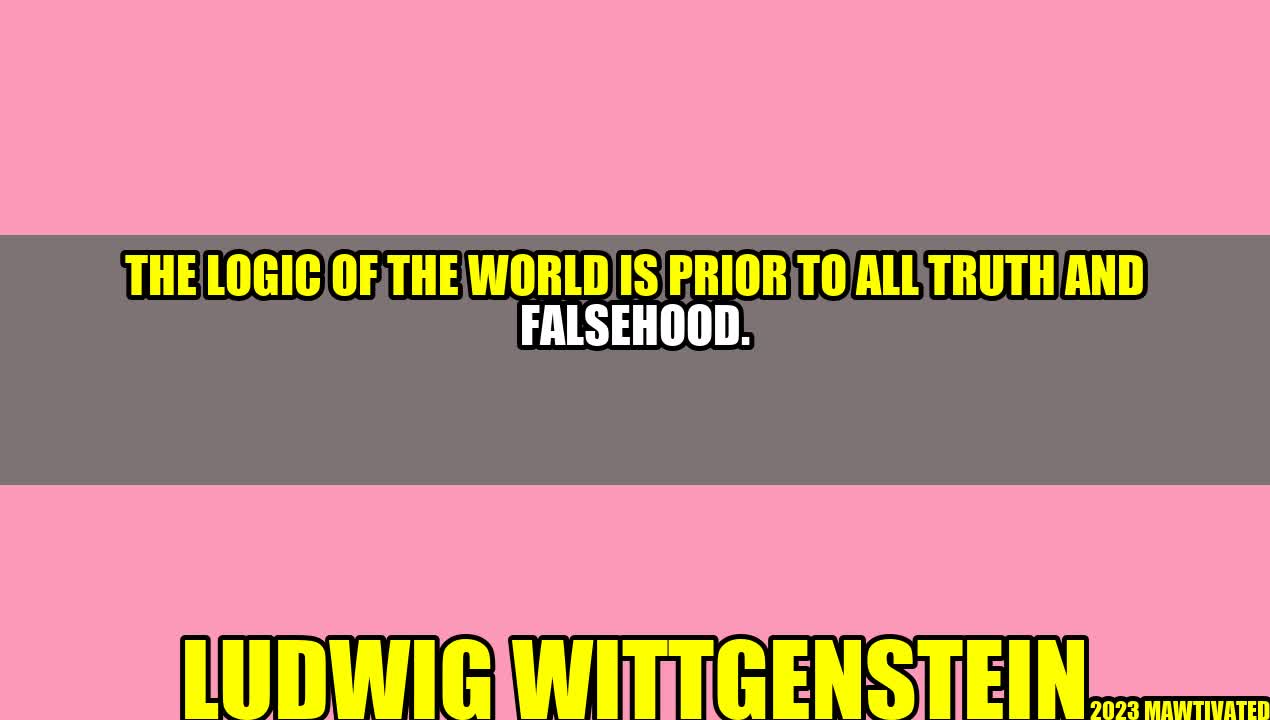The Logic of the World: Beyond Truth and Falsehood

A journey towards understanding the enigma of the world’s logic
I remember when I was a little boy, my grandfather would always tell me stories about his travels around the world. One story that stood out to me was when he visited a remote tribe in Africa. The tribe had a unique way of interpreting reality, and they believed in a logic that went beyond truth and falsehood. They believed that everything was interconnected and that everything in the world was both true and false at the same time. They said that everything depended on how you looked at it, and that people could only understand the world if they were willing to see things from multiple perspectives.
This story stayed with me, and when I grew up and studied philosophy, I discovered Ludwig Wittgenstein, who is famously known for his groundbreaking ideas about the role of language in creating reality. Wittgenstein believed that there was no objective reality that existed beyond language and that the way we perceive the world was shaped by our language and culture. He believed that the logic of the world was not something that could be grasped through a set of rules or formulas, but something that had to be experienced firsthand.
Wittgenstein’s ideas were revolutionary, and they challenged the way we think about logic and truth today. He argued that logic was not something that existed in the abstract, but something that was deeply intertwined with our human experience. He believed that our language, our culture, and our social relationships all played a role in shaping our understanding of truth and falsehood.
Examples of the Logic of the World
One example of the logic of the world can be seen in the way we interpret art. When we look at a work of art, we don’t just see colors and shapes on a canvas, we also see emotions, stories, and ideas. The artist is not just creating something beautiful, they are also expressing something meaningful about the world. The meaning of the work of art is not something that can be reduced to a set of rules or formulas, but something that must be experienced and interpreted through our individual perspectives.
Another example of the logic of the world can be seen in the way we interpret history. When we look at history, we don’t just see a set of dates and events, we also see stories, conflicts, and struggles. The history of a nation is not just a list of facts, it is also a narrative that shapes our identity as a people. The meaning of history is not something that can be reduced to a set of rules or formulas, but something that must be experienced and interpreted through our individual perspectives.
Conclusion
- The logic of the world is not something that can be grasped through a set of rules or formulas, but something that must be experienced firsthand.
- The meaning of the world is not something that can be reduced to a set of rules or formulas, but something that must be experienced and interpreted through our individual perspectives.
- The logic of the world is something that is deeply intertwined with our human experience, and it is shaped by our language, culture, and social relationships.
“The world is everything that is the case.” -Ludwig Wittgenstein

Curated by Team Akash.Mittal.Blog
Share on Twitter
Share on LinkedIn